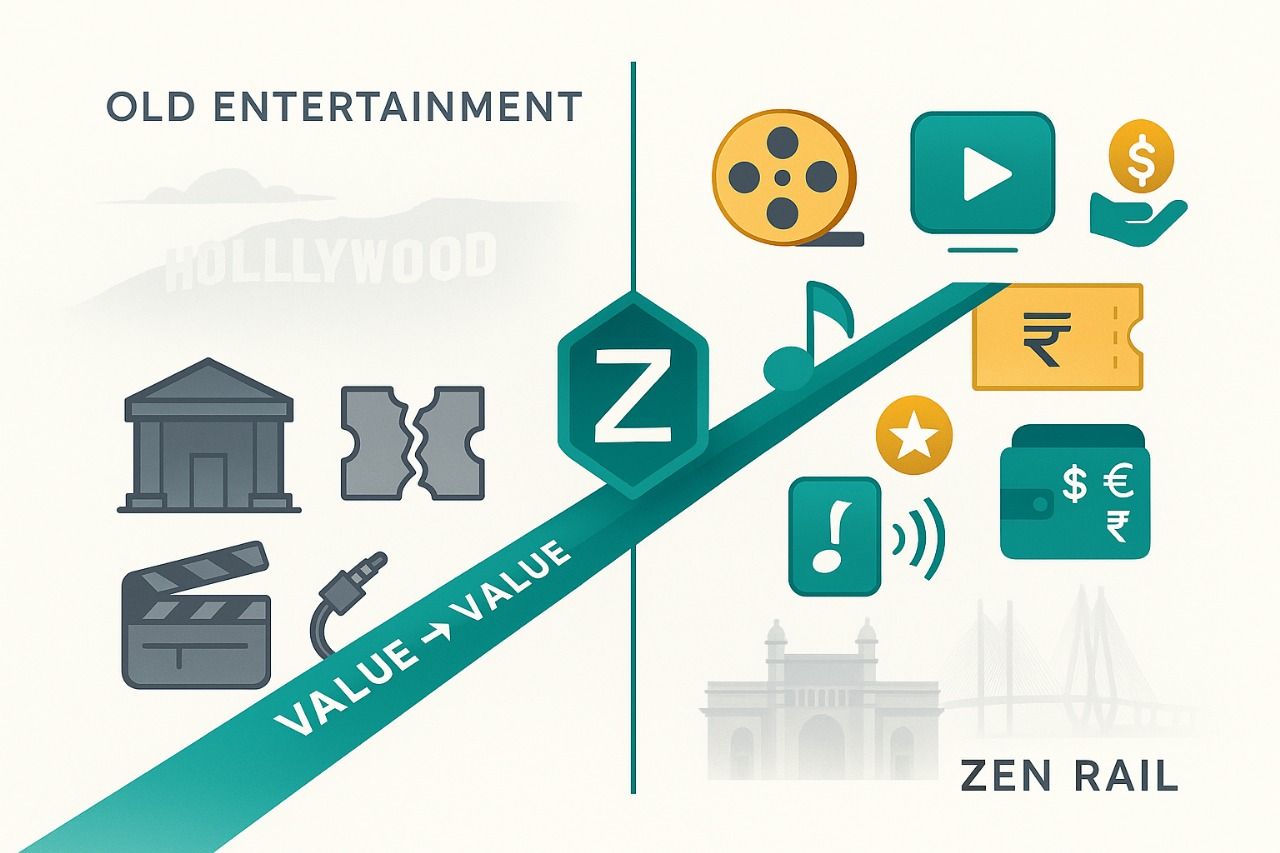
There are many masterpieces in Hindi film music, but only ONE I’d call complete -where words, melody, and voice don’t just coexist, they integrate into a single, inevitable unit.
Gulzar’s “Raah Pe Rehte Hain” (from Namkeen, 1982), composed by R.D. Burman and rendered by Kishore Kumar, is that rare unity. It’s the one song I return to the most, and as an out-and-out Prime Mover, I can state precisely why.
(Credits: Film: Namkeen (1982); Lyrics: Gulzar; Music: R.D. Burman; Singer: Kishore Kumar.)
A song about motion, not moaning
At its core, this song is about movement; about choosing a road and staying on it with clear eyes. Even its opening idea (“raah pe rehte hain…”) treats life not as a fog of fate but as a sequence of chosen steps. There’s no self-pity, no plea for rescue. The stance is adult: I exist, I choose motion; therefore, I live (and am happy). That is deeply causalistic.
Purpose is not a background feeling, it’s the engine.
Gulzar’s writing respects reality. His metaphors don’t demand mystical belief; they illuminate facts. When the lyric speaks of heat and shade, it recognizes that effort has consequences - sometimes harsh - and that character is forged in contact with the real, not in escape from it. It’s resilient without being martyrish, tender without demanding sacrifice.
Words that honor agency
A prime mover holds that man is a being of self-made soul. This lyric treats the self as an active doer: the traveler who builds meaning out of memory, experience, and choice. Even when it glances at loneliness, it doesn’t sentimentalize it. It understands that independence often looks like solitude from the outside; and accepts that cost with dignity.
Gulzar’s economy is crucial here. He never over-explains. The line-images are spare, exact, and concrete; thus leaving room for my mind to complete the picture. That respect for the listener’s rational faculty is part of why I love him: he invites cognition; he doesn’t short-circuit it.
Pancham’s tune: economy as power
R.D. Burman’s composition is deceptively simple. No sugary crescendos to manipulate emotion; no ornamental detours to show off cleverness. The melody walks, like a man on a road with something to do. The rhythm keeps time like footsteps. The harmony gives the words space to breathe. Everything serves the idea.
This is art with discipline. In my terms, Burman’s choices are a moral statement: he refuses to blur the lyric with musical fog. He chooses clarity over clutter: form serving content, not the other way around.
Kishore’s voice: earned ease, not pleading
Kishore Kumar sings this the way a creator would speak: relaxed, centered, assured. There’s warmth but no whine, sweetness but no syrup. He doesn’t emote at me; he shares an attitude with me. That matters. A prime-mover celebrates self-esteem; the resolute conviction that one is worthy of happiness.
Kishore’s timbre carries that self-esteem naturally; his phrasing suggests someone who has looked at the world, at its terms, and chosen to keep going on his own terms with a quiet smile.
Lingering on the last stanza
That closing line: “hum thehar jaaye jaha, usko shahar karte hai” (“wherever I halt, I turn it into a city”), is sort of my credo in eight words.
It isn’t a romantic sigh; it’s a builder’s promise. It says: I don’t beg for a ready-made world. I arrive, assess reality, and make one: brick by brick, system by system, value by value. The dust of “nowhere” becomes streets, contracts, and purpose because I bring a mind that refuses to drift.
I love this line most because I have lived it, through my teens and my adult years, always from scratch, back to the wall, converting scarcity into structure. Every time I’ve chosen to stay and build, it has been on the trader principle: value for value, no favors asked, no looting offered. If a place had nothing but a patch of ground and a hard problem, that was enough. I would measure, plan, produce; and leave behind a “city”: projects that function, rails that move money, products that work, standards that last.
Let me structure the values that animate this line:
• Reason: I start with facts: what exists, what’s possible, what constraints bind; and I think. I integrate; I execute. No mysticism, no luck.
• Purpose: I choose a central aim and organize the chaos around it. A halt becomes a foundation, not a cul-de-sac.
• Self-esteem: I hold my head high because I know I’m the cause of my success. I don’t apologize for ambition; I operationalize it.
“Hum thehar jaaye jaha…” is also a stance on time. A pause isn’t surrender; it’s staging. I stop only to gather resources, align people, and set direction; then I turn momentum into masonry. This is why I never give up: quitting would negate everything I’ve already transformed. The road behind me is proof that the next barren stop can become another city.
So when Kishore’s voice lands on that line, I hear more than poetry. I hear my operating manual. It validates the way I have worked and the way I will continue to work: always with clear focus, with my head held high, and with an uncompromising commitment to value for value. I don’t wait for a city. I build one.
Integration: the highest aesthetic virtue
I call it a complete song because nothing is accidental. The lyric articulates a philosophy of motion and memory. The tune structures that philosophy into time. The voice personalizes it into lived experience. Word → tune → voice line up like gears: no contradiction, no slack. That unity is what I ask of art: a clear sense of life, expressed with skill/craft, delivered with conviction.
Most songs excel in one dimension and carry the others along. This one achieves integration. As a producer, I’m moved not by vagueness but by the sight (and sound) of a mind selecting essentials and shaping them into something inevitable. “Raah Pe Rehte Hain” does exactly that.
Why it sits at the top for me
• It’s rational: a lucid view of life as chosen motion, not a fog of helplessness.
• It’s purposeful: every musical and verbal decision advances the central idea.
• It’s self-respecting: the performance stands upright; no begging, no bartering for sympathy.
• It’s benevolent: even in acknowledging heat and fatigue, it affirms that the road is worth walking.
In a canon crowded with hymns to self-sacrifice or sentimental resignation, this song chooses something else: the dignity of going on. That’s why, for me, it rises above nostalgia and becomes philosophy set to melody.
The film context (and why it enriches the song)
Placed within Namkeen - a Gulzar film that treats people as complex adults - the song inherits a narrative integrity. The film’s world is not a fairy-tale; it’s textured, imperfect, human. The music respects that world. It’s an art-truth I admire: show life as it is, without sneer or sanctimony, and then let the individual choose.
What I carry away every time
Every replay is a reset: shoulders drop, spine straighten, focus returns. The song reminds me that my past is capital, my present is action, and my future is the road I choose next. That is why I love it most: because it doesn’t just sound good; it re-aligns me with my first principles: reason, purpose, self-esteem.
If you want to understand my philosophy in four minutes of Hindi music, this is it: a complete song.
References for credits and release context: Namkeen (1982) soundtrack and attributions to Gulzar, R.D. Burman, and Kishore Kumar; album listings and track credits corroborate the pairing.




